This Turkish bread recipe is tender and fluffy with a dough enriched with milk for an extra-soft texture. I tested it a dozen times and a dozen ways to ensure no-fail results. If you like my viral Butter Naan recipe, you’ll also definitely love this!
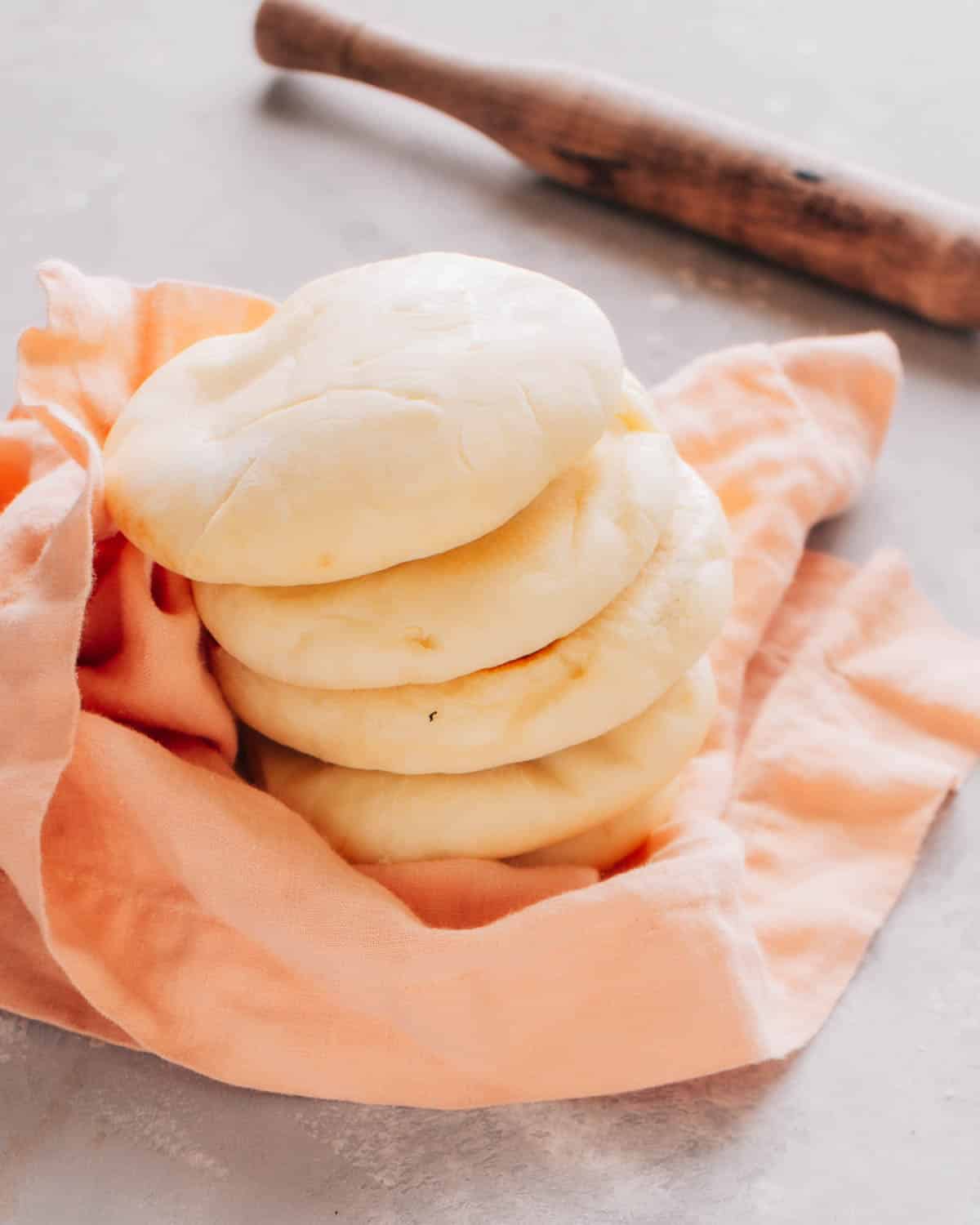
Table of Contents
- What are the Different Kinds of Turkish bread?
- You’re Going to Love this Authentic Recipe
- A Simple Turkish Bread Recipe: Gather Your Ingredients
- Grab these Tools
- How to Make This Easy Turkish Bread Recipe: Step-by-Step Directions
- How to Eat Your Homemade Turkish Bread
- Make Ahead and Storage Tips
- Variations and Substitutions
- The Secret to Fluffy Turkish Bread? Expert Tips and Tricks:
- FAQs
- Other Delicious Bread Recipes You’ll Love
- Soft, Fluffy Turkish Bread Recipe
What are the Different Kinds of Turkish bread?
Turkey has so many incredible breads to offer, each with its own unique characteristics and flavor profile. Here are some of the most common Turkish bread types:
- Pide: Turkish pide bread is a type of traditional Turkish bread that is similar to a flatbread or a pizza crust. It is often elongated or oval-shaped and can be topped with various ingredients, such as cheese, meat, vegetables, and herbs.
- Simit: Simit is a type of circular bread that is coated in sesame seeds. It is often enjoyed as a breakfast food in Turkey and can be eaten plain or with toppings like cheese, butter, and jam.
- Lavash: Lavash is a thin, unleavened bread that is typically enjoyed as a wrap or rolled around various fillings. It can also be torn into pieces and used as a utensil to scoop up dips and sauces.
- Bazlama: Bazlama (this recipe!) is a type of thick, fluffy flatbread, sometimes called Turkish pita bread. It is often served with breakfast foods like eggs and cheese. This is my favorite Turkish flatbread recipe.
- Ekmek: Ekmek is a type of crusty white bread that is popular in Turkey. It can be enjoyed plain or with toppings like cheese, honey, or olive oil.
Turkish flatbread recipes come in many shapes and sizes, and the texture and toppings can vary depending on the region of Turkey where the bread is made.
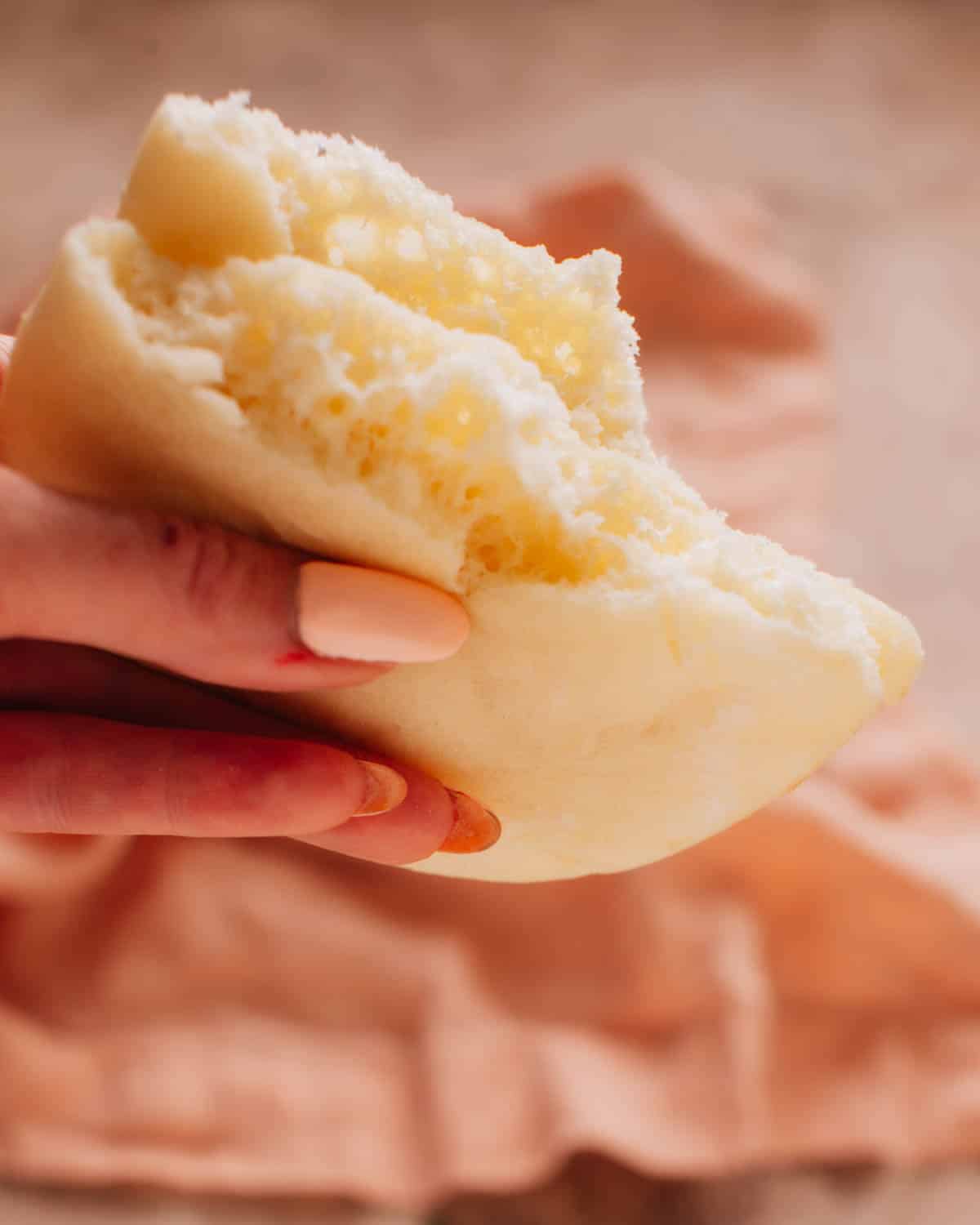
You’re Going to Love this Authentic Recipe
This authentic Turkish flatbread recipe is for a special bread called bazlama. It is sometimes compared to pita or naan, but it is thicker and fluffier than both and is absolutely delicious in its own right. I’d say it is most similar to Greek-style pita bread, which has no pocket. This particular recipe, however, produces softer bread with more moisture than any store-bought Greek pita I’ve had.
The dough is divided into individual portions, which are then shaped into round, flat discs. It is typically cooked on a griddle or stovetop, but I found it gets fluffier and stays softer when oven baked.
Bazlama bread is commonly enjoyed for breakfast or with meals, and it can be served plain or with various toppings, such as butter, cheese, honey, or jam. It can also be used as a base for sandwiches or to accompany dips, soups, and stews. This versatile Turkish bread is not only popular in Turkey but is also enjoyed in Middle Eastern cuisine and in the Balkans.
This Turkish flatbread recipe has quickly become one of my favorite bread recipes. Here’s why:
- Easy to Make: All it takes is a few simple ingredients and a little bit of time to create this amazing bread at home.
- Incredibly Versatile: It pairs with almost anything – hummus, soups, stews, salads, you name it!
- Amazing texture: I keep repeating, and I won’t stop: it’s JUST SO FLUFFY.
A Simple Turkish Bread Recipe: Gather Your Ingredients
First thing first, let’s round up the ingredients for this fabulous recipe for Turkish flatbread. It is so simple to make and uses basic ingredients:
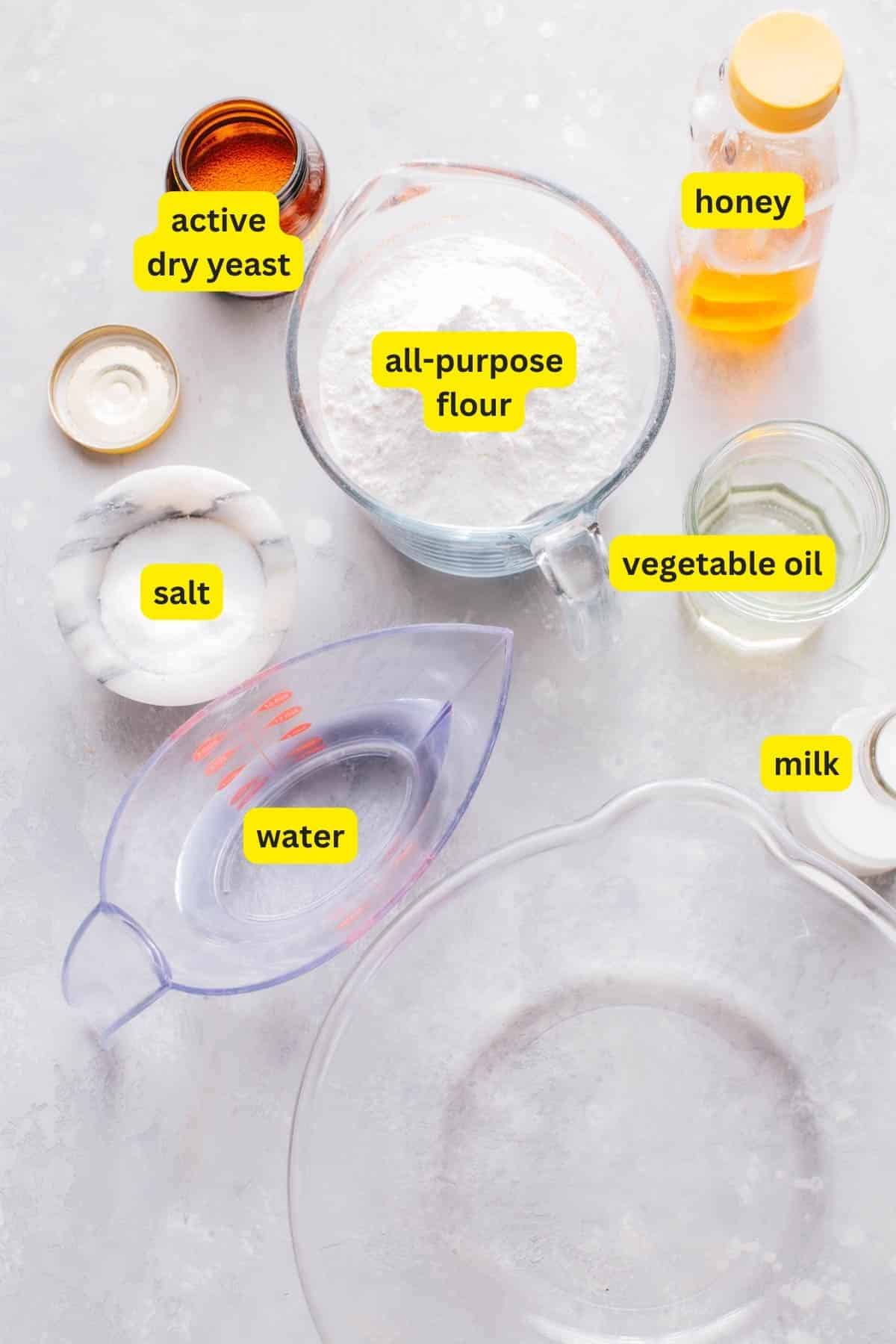
- All-purpose flour: Our main squeeze and the backbone of our bread. It provides structure, forming the gluten networks that give our Turkish bread its unique texture.
- Water: This humble component does more than you’d expect. It hydrates the flour, helping to start the gluten-development process, and assists in the activation of the yeast. No water, no rise, my friends.
- Milk: Our secret sauce to richness and a beautifully tender crumb. Its natural sugars also help to boost our bread’s color, making it oh-so-appealing.
- Honey: Honey, let me tell you, this isn’t just for sweetness. It helps to feed the yeast, enhancing the rise and imparting a subtle hint of natural sweetness to our bread.
- Active dry yeast: This is our bread’s powerlifter, helping it rise to the occasion.
- Vegetable oil: Slipping in a bit of moisture and fat, it helps to keep our bread soft and tender for longer. This is the secret behind every bite that says ‘Made with Love’.
- Salt: The unsung hero, it strengthens the gluten structure and brings out all the other flavors.
So there you have it. Your kitchen is about to smell like a cozy Turkish bakery.
Grab these Tools
Before we get baking, let’s get our toolkit in order. Don’t worry, there’s nothing too fancy here.
- Large Microwave-Safe Bowl: To warm your liquids and let the yeast bloom.
- Wooden Spoon: Perfect for mixing your ingredients without overworking the dough.
- Baking Sheet with Parchment Paper: Ensures that your bread doesn’t stick and provides an easy cleanup.
- Stand Mixer with a Dough Hook (Optional): If you’ve got one, it’ll save you the elbow grease when kneading the dough.
How to Make This Easy Turkish Bread Recipe: Step-by-Step Directions
Get ready to roll up your sleeves and embark on this culinary adventure to make this recipe for Turkish bread. Here’s the rundown on how to become your neighborhood’s favorite amateur baker.
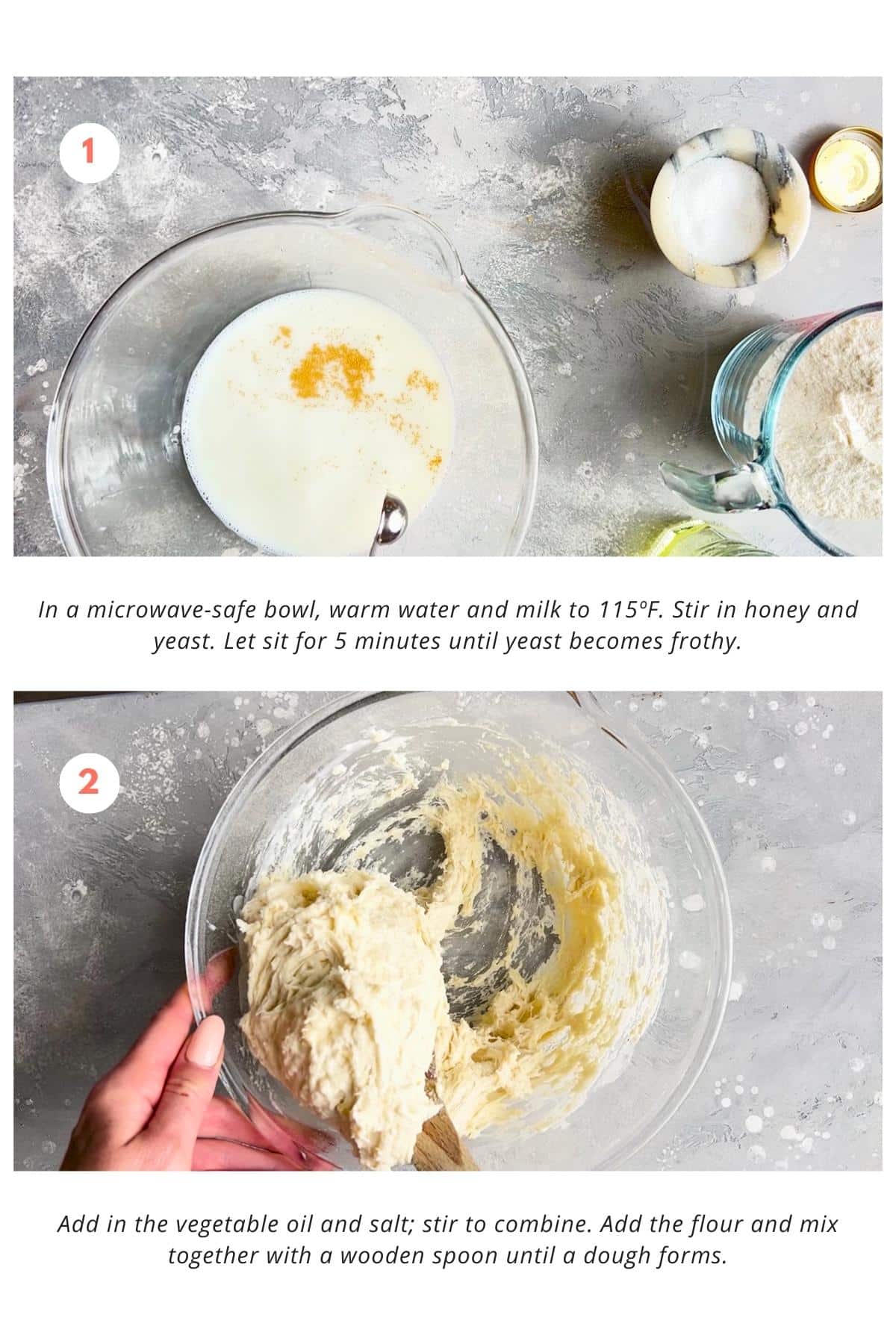
- Warm water and milk: The heated liquids wake up the yeast and give it a comfy environment to get to work.
- Stir in honey and yeast: The honey serves as a tasty treat for the yeast, encouraging it to bloom and start the fermentation process, which is vital for the bread to rise.
- Add oil and salt: These two sneak in flavor and tenderness into the dough, ensuring each bite is as enjoyable as the last.
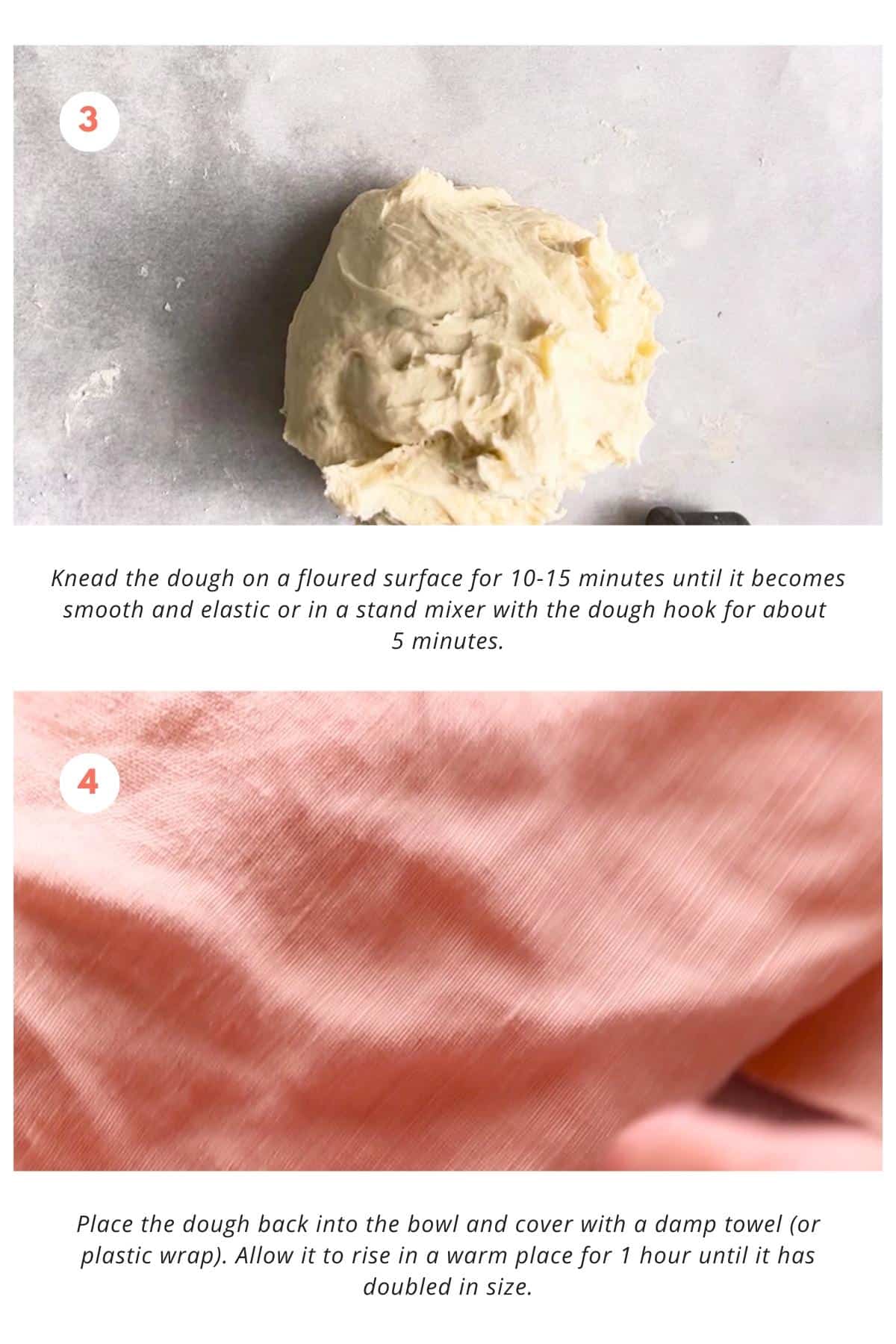
- Incorporate flour: The flour kicks off the gluten formation, which will give our bread its signature soft yet chewy texture.
- Knead the dough: This is your workout for the day. Dump the dough onto a clean, floured work surface and start folding it over on itself and pushing it away. Kneading helps to strengthen the gluten networks, making the dough elastic and ready to rise.
- Let it rise: This is where we practice our patience. The dough needs this time to ferment and create gases that will puff up our bread.

- Preheat the oven: A hot oven ensures a fast rise and helps to create those lovely pockets of air inside the bread.
- Shape and bake: Roll your dough and shape it before sending it into the oven. The heat makes the water in the dough turn into steam, causing the dough to puff up and create that delicious, airy texture.
- Cool and serve: Give your bread a few moments to cool down after its hot adventure. This makes it easier to handle and allows the structure to settle before you dive in.
That’s all there is to it! It might take a little practice, but soon you’ll be making Turkish bread like a pro.

How to Eat Your Homemade Turkish Bread
How should you serve these beautifully puffy rounds of perfection? Allow me to inspire your taste buds.
- Dip Transporter: Use it to scoop up dollops of hummus, spinach dip, or Cucumber Raita (Indian yogurt sauce).
- Kebab Wrap: Fill it with sizzling grilled meats (like Lamb Kofta, Harissa Lamb Chops, or Indian Lamb Chops), or go vegetarian with Indian Chickpea Salad or Buffalo Chickpeas. You’ll want to pair all your favorite kebab recipes with Turkish bread, too.
- Breakfast: Lightly toast it, slather on some honey or your favorite jam, and serve it with a side of fresh fruits. Morning, meet your new favorite breakfast.
- Soup’s Best Friend: Serve it with your go-to soup and stew recipes and soak up all those delicious drops from the depths of your bowl. I recommend this incredible homemade tomato soup recipe, my favorite Ground Turkey Soup, or this tender and delicious Beef Vegetable Soup.
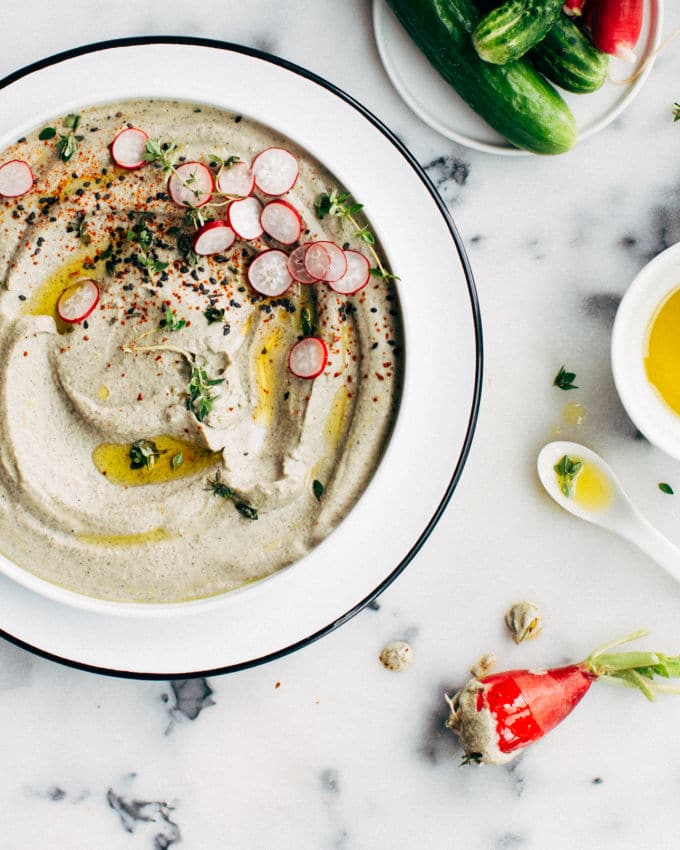
Make Ahead and Storage Tips
For those looking to prep ahead or save leftovers, here are some practical tips for your Turkish bread.
- Prepare Dough in Advance: Assemble the dough a day before and let it rise in your fridge overnight. Let it come to room temperature before rolling it out. This ensures you have the dough ready to bake fresh bread whenever you need it.
- Freezing Option: Fully baked and cooled Turkish bread can be stored in the freezer. It’ll retain its quality for up to 3 months and be ready to serve with just a quick reheating.
- Room Temperature Storage: Keep your bread fresh at room temperature by sealing it in a zip-top bag. It will stay good for up to a few days.
- Refresh Stale Bread: If your bread has lost its freshness, lightly dampen it and pop it in the oven. The heat will restore its original soft texture.
- Transform into Breadcrumbs: Bread past its prime? Don’t toss it out. Instead, convert it into breadcrumbs for use in other recipes. Your food waste footprint — and your next breaded dish — will thank you.
Variations and Substitutions
Discover the endless possibilities of Bazlama with these mouthwatering variations and substitutions that will elevate your flatbread experience:
- Add Herbs: Infuse your Bazlama with aromatic flavors by incorporating finely chopped fresh herbs like parsley, dill, or cilantro into the dough.
- Spice it Up: Give your Bazlama a kick by adding spices such as cumin, paprika, or za’atar to the dough, creating a unique flavor profile that complements your favorite dips and spreads.
- Cheesy Delight: Transform your Bazlama into a scrumptious treat by stuffing it with cheese like feta, mozzarella, or halloumi before cooking, resulting in a gooey, irresistible center.
- Go Gluten-Free: Make your Bazlama accessible to everyone by using gluten-free flour blends or alternative flours like chickpea or almond flour, ensuring that even those with dietary restrictions can indulge.
- Sweet Tooth Satisfaction: Turn your Bazlama into a delectable dessert by adding sweet ingredients like cinnamon, nutmeg, or even cocoa powder to the dough, and serve it with honey, fruit preserves, or Nutella for a delightful finish.
- Seedy Goodness: Boost the nutritional value and texture of your Bazlama by mixing in seeds like sesame, sunflower, or pumpkin seeds, creating a delightful crunch with every bite.
- Flour Variations: You can substitute half the all-purpose flour with whole wheat flour for a higher-fiber version.
- Dairy-Free: Make a plant-based vegan turkish bread by swapping out the milk with a non-dairy alternative like almond or soy milk.
The Secret to Fluffy Turkish Bread? Expert Tips and Tricks:
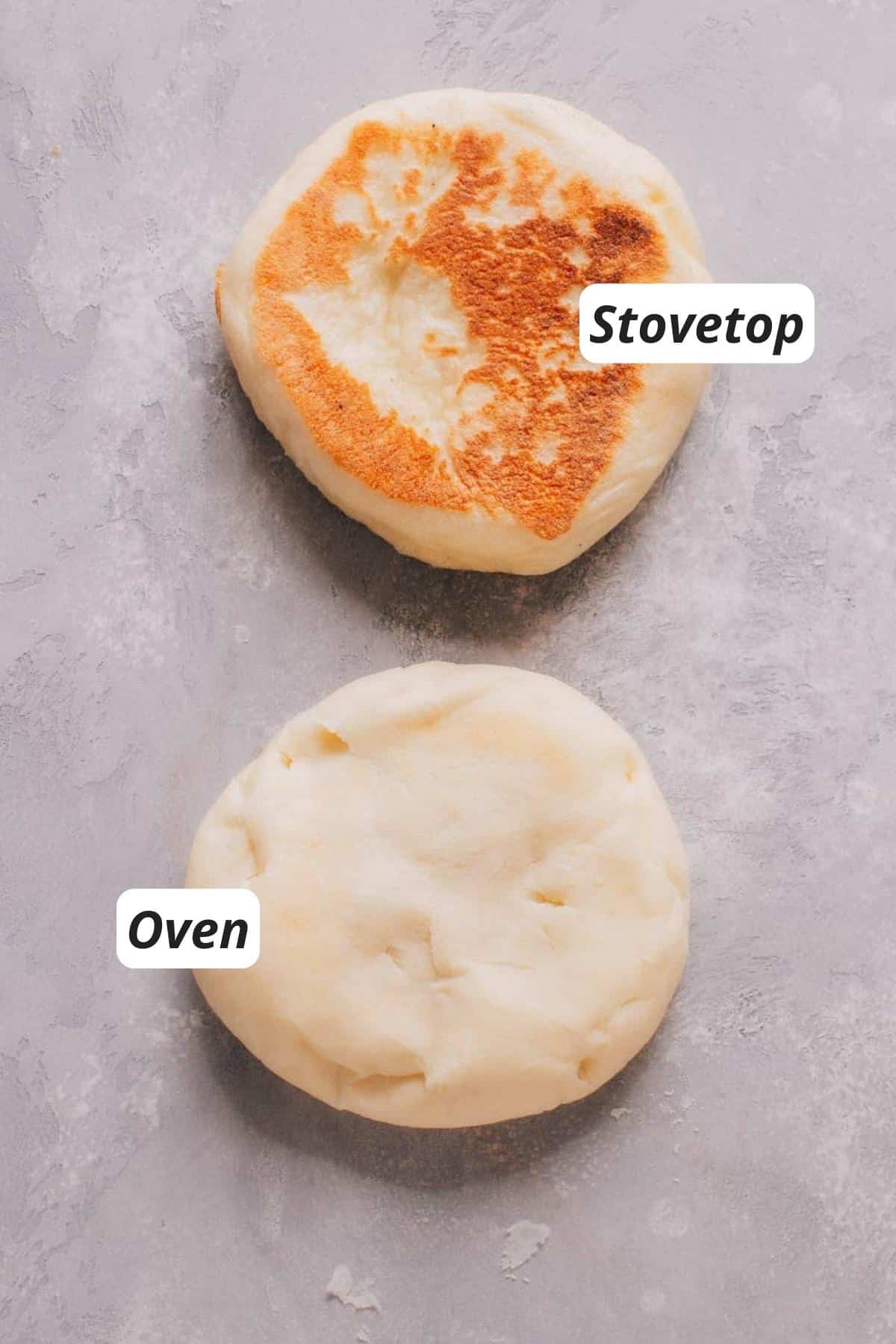
The secret to achieving perfect pouf lies in a few key factors. Here are some tips to help you make Turkish flat bread that puffs up nicely:
- High oven temperature: Preheat your oven to a high temperature, typically around 450°F or even higher. The intense heat helps the Turkish breads to puff up quickly.
- Preheated baking surface: Place a baking stone, baking sheet, or cast-iron skillet in the oven while it preheats. The hot surface helps to create the initial burst of steam that causes the bread to puff.
- Proper dough consistency: The dough for Turkish bread should be soft, smooth, and slightly sticky. It should be well-kneaded to develop gluten, which contributes to the bread’s structure and elasticity.
- Resting time: After the dough has been kneaded, allow it to rest and rise for at least an hour. This allows the gluten to relax, making it easier for the dough to puff up when baked.
- Rolling out the dough: Roll out the dough into rounds or ovals that are about 1/4 to 1/2 inch thick. The thickness should be consistent throughout to ensure even cooking and puffing.
- Quick baking time: Turkish bread bakes very quickly. Place the rolled-out dough directly onto the preheated baking surface in the oven, and it should puff up within a few minutes—usually between 3 to 5 minutes. Keep a close eye on them to prevent overcooking.
- Steam: The steam created in the oven is crucial for the bread to puff up. Avoid opening the oven door during baking to maintain the steam and heat levels.
By following these tips, you will be able to totally nail this soft and fluffy Turkish flat bread recipe.

FAQs
Turkish breads come in various forms and have different names depending on the type of bread. Some well-known Turkish breads include:
Simit: A popular circular bread coated with sesame seeds, often compared to a bagel. It is widely enjoyed for breakfast or as a snack throughout Turkey.
Pide: A boat-shaped, thick flatbread typically topped with ingredients like cheese, minced meat, vegetables, or eggs. Pide is sometimes referred to as “Turkish pizza.”
Bazlama: As mentioned earlier, Bazlama is a soft, slightly chewy, and thicker Turkish flatbread typically cooked on a griddle or stovetop.
Lavash: A thin, unleavened flatbread that is traditionally cooked on the walls of a tandoor oven. It is often used as a wrap for kebabs or other fillings.
Ekmek: This term refers to a variety of bread loaves in Turkey, such as white or whole wheat loaves. It is a staple in many Turkish households and is often served with meals.
What sets Turkish bread apart is the diversity in shapes, textures, and flavors, as well as the traditional methods of preparing and cooking the bread. Many types of Turkish bread are enjoyed fresh and warm, straight from the oven or griddle.
Among these breads, Simit is arguably the most famous and iconic Turkish bread. Its unique shape, sesame seed coating, and delicious flavor make it a beloved choice for both locals and tourists.
Turkish bread can be enjoyed in various ways, depending on the type of bread and personal preferences. Here are some common ways to eat Turkish bread:
Dipping: Tear off a piece of bread and use it to scoop up dips, spreads, or sauces like hummus, baba ganoush, tzatziki, or muhammara.
Sandwiches and Wraps: Fill or wrap the bread with ingredients such as grilled meats, cheese, vegetables, or falafel to create a satisfying sandwich or wrap.
Accompaniment to Meals: Serve Turkish bread alongside soups, stews, salads, or main dishes as a delicious and versatile side.
Topped: Depending on the bread type, you can top it with various ingredients before baking, like cheese, minced meat, or vegetables, as seen with Pide.
Breakfast: Enjoy Turkish bread for breakfast with spreads like butter, honey, fruit preserves, or Nutella, or pair it with cheese, olives, tomatoes, and cucumber for a more savory option.
Toasted: Slice the bread and toast it lightly, then drizzle with olive oil or spread with butter for a simple yet tasty snack.
These are just a few examples of how to enjoy Turkish bread, but the possibilities are endless. Feel free to get creative and explore new ways to savor these delicious and versatile breads.
Other Delicious Bread Recipes You’ll Love
- Paratha (flaky and layered restaurant favorite)
- Roti (Amma’s recipe for super soft staple Indian flatbread)
- Aloo naan (the viral naan recipe stuffed with a spicy potato mixture)
- Keema naan (naan filled with spiced meat)
- Fresh Flour Tortillas (an easy recipe to make delicious flour tortillas from scratch)
- Oatmeal Brown Bread: Wholesome goodness of rolled oats and a touch of molasses for a delightful nutty flavor.
- Chapathi: A staple Indian flatbread that is soft, versatile, and incredibly easy to make. It resembles a whole wheat wrap or tortilla.
- Butter Naan: This homemade naan recipe was perfected over the years to achieve a soft and stretchy texture that rivals your favorite Indian restaurant!
- Homemade Pizza Dough: This recipe gives a thin and crispy crust that brings the essence of wood-fired oven pizza right to your home.
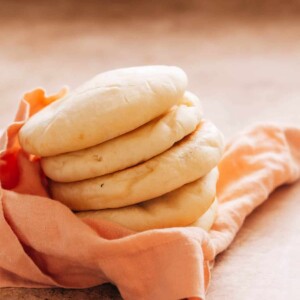
Soft, Fluffy Turkish Bread
Ingredients
- 4 cups all-purpose flour
- 1 cup water
- ½ cup milk
- 2 tsp honey
- 2 tsp active dry yeast
- ¼ cup vegetable oil
- 2 tsp salt
Instructions
Prepare the dough:
- In a large microwave-safe bowl, warm together the water and milk until it reaches 115ºF. (It should be very warm to touch but not so hot you can't hold your finger in it.) Stir in the honey, and then the yeast. Let sit for 5 minutes until the yeast becomes frothy.
- Add in the vegetable oil and salt; stir to combine. Add the flour and mix together with a wooden spoon until a dough forms.
- Knead the dough on a floured surface for 10-15 minutes until it becomes smooth and elastic or in a stand mixer with the dough hook for about 5 minutes. It will be VERY sticky at first, don’t be tempted to dump in more flour. As the starch hydrates, the dough will absorb the liquid and it will be fine.
- Place the dough back into the bowl and cover with a damp towel (or plastic wrap). Allow it to rise in a warm place for 1 hour until it has doubled in size.
Heat the oven and roll the dough:
- Line a large baking sheet with parchment paper. Place it in the oven on the middle rack. Place a small baking dish (or pie plate) on the bottom rack. Preheat the oven and the pans together to 450ºF. Once the dough has risen, dump it onto a floured surface and divide it into 8-10 equal pieces.
- Roll each piece of dough into a circular shape, 1/4 inch thick. It’ll be quite tacky to work with but it’s ok! Work with damp hands and keep the counter floured. You can do it. This moisture ensures soft bread.
- When ready to bake, transfer the dough rounds to the preheated parchment-lined baking sheet (you may need to do two batches depending on the size). Pour 1/4 cup water into the baking dish on the bottom rack just before closing the oven door. This creates a steam oven.
- Bake for 3 minutes, or until top is puffed up. Flip the breads, then continue baking for 2 minutes more. It should be puffed up and dry (internal temperature 180ºF). It won’t brown much.
Video
Notes
- This recipe yields 8 Turkish breads, depending on the size of each piece of dough. The dough can also be frozen for later use if desired.
- You CAN do this Turkish Bread in a pan, but over direct heat, they dry out much more than they do in the oven. Stovetop method:
- Heat a large cast iron skillet, griddle, or nonstick pan over medium-low heat.
- Place one circle of dough onto the skillet, carefully add a splash of water (it will turn to steam immediately so wear oven an oven mitt), cover, and cook for 1 minute. Uncover, flip, add another little splash of water, and cover again. Continue cooking 2 minutes more. Check the underside after 1-2 minutes to make sure it isn’t getting too dark (if it is, flip it and turn down the heat). When it’s done, it will be golden brown and fluffy.
Nutrition
Nutrition information is automatically calculated, so should only be used as an approximation.
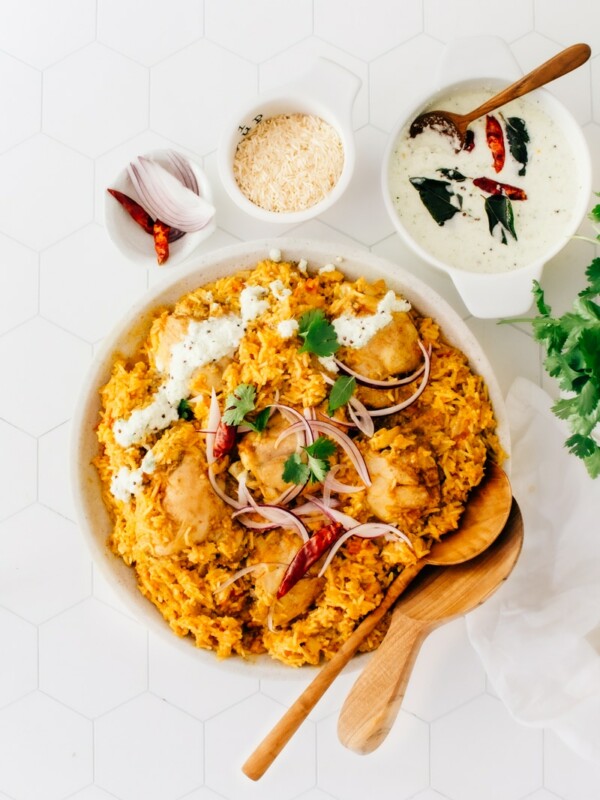
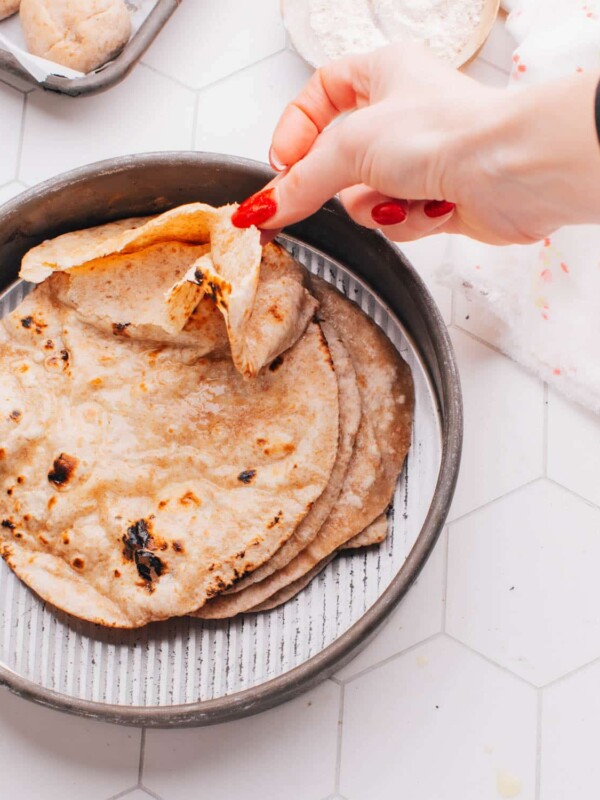
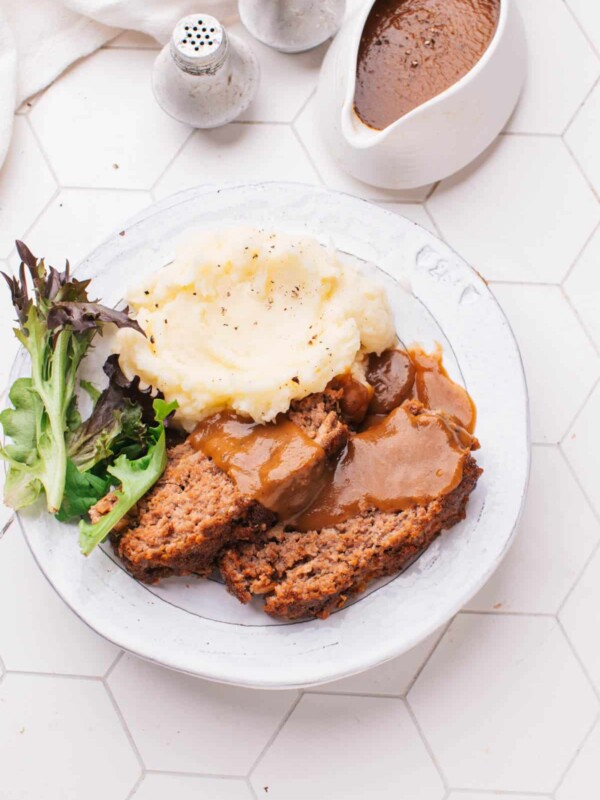
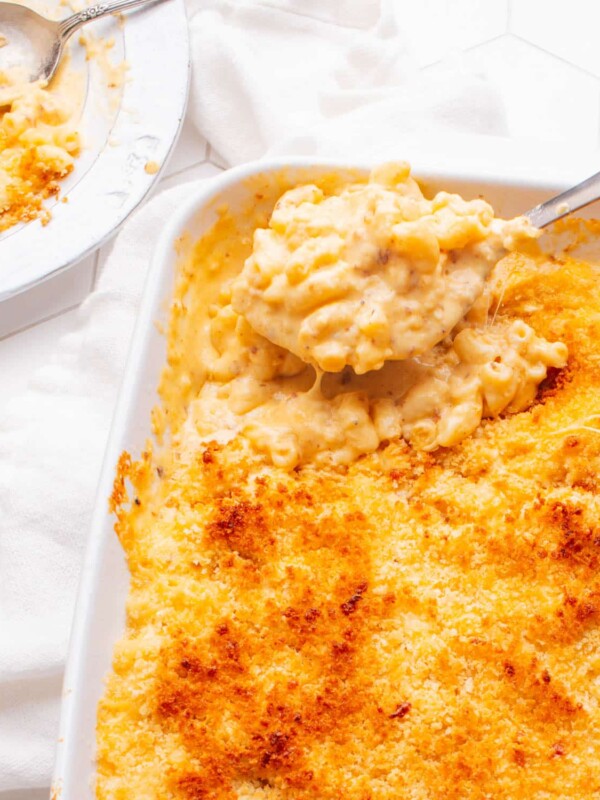









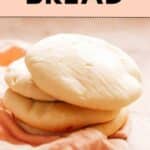
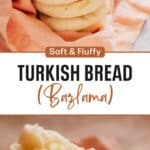

I’ve just added this Turkish bread to my list of kitchen victories! The bazlama’s texture is wonderfully soft and inviting, just as you described. I’m a big fan of your Butter Naan recipe, and this one exceeded my expectations too.
I gave this Turkish bread a shot, and I’m over the moon with the results! The bazlama turned out perfectly fluffy and soft, and the milk in the dough truly did the trick.
Made this Turkish bread today, and it’s a total winner! The bazlama’s texture is just spot on, so soft and delightful. Your no-fail results claim wasn’t an exaggeration at all.
I tried making this Turkish bread, and oh my goodness, it’s a game-changer! The bazlama turned out beautifully fluffy and soft. It’s unlike anything I’ve tasted before – a bit like pita but even better. Your recipe made it so easy to follow, even for a beginner like me. Thanks a bunch!
Absolutely nailed this Turkish bread recipe! The bread turned out so tender and fluffy, just like you promised. The addition of milk to the dough really made a difference in the texture.
I tried this Turkish bread recipe, and it turned out amazing! The bread was incredibly soft and had a delightful fluffiness to it. It paired perfectly with some grilled chicken and made for a fantastic dipping bread.